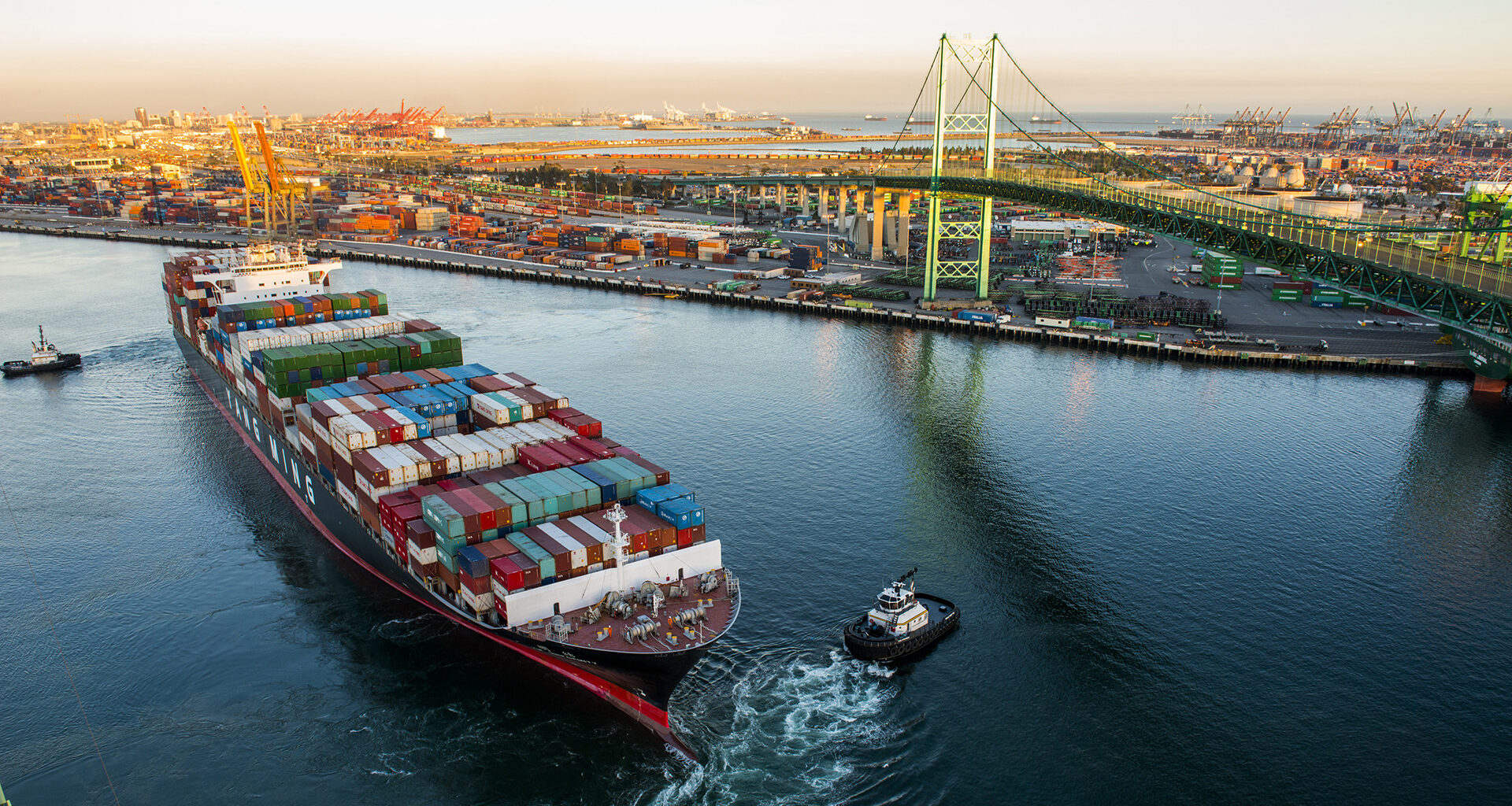The Long Beach Board of Harbor Commissioners has issued a stamp of approval for a cooperative agreement with the South Coast Air Quality Management District (SCAQMD) and the Port of Los Angeles encompassing “time-bound and enforceable” commitments to develop zero-emissions infrastructure at the ports’ complex.
 Illustration. Image Courtesy: Port of Los Angeles
Illustration. Image Courtesy: Port of Los Angeles
As disclosed, the cooperative agreement, which was officially greenlit on November 7, envisions that the ports of Los Angeles and Long Beach create and implement plans for zero-emission infrastructure for equipment types in three phases. A draft plan is to be developed in May 2027, followed by approved plans for all categories by the end of 2029.
The development of zero-emission infrastructure at the ports’ complex is seen as an ‘essential’ step toward eliminating pollutants from cargo-handling equipment, ocean-going vessels, trucks and trains, as well as ensuring clean air in the region.
In the upcoming months, the ports’ officials said that work would continue with SCAQMD on further Clean Air Action Plan (CAAP) Plus measures that would concentrate on emission-cutting strategies regarding cleaner ocean-going ships, which are said to be the largest source of emissions in both Los Angeles and Long Beach. This is planned to be achieved via strategies like the Environmental Ship Index Incentive programs.
As informed, the Los Angeles Harbor Commission is due to vote on the agreement at its next regular meeting on November 20, upon which the parties would execute the agreement. The negotiations for the additional CAAP Plus measures are envisioned to be wrapped up by spring 2026.
As part of the agreement, SCAQMD will reportedly confirm progress through annual reviews and regular reporting to its governing board on the initiative’s implementation and progress. According to SCAQMD, penalties for noncompliance (which would start at $50,000 and go up to $200,000) would be used toward projects benefiting near-port communities.
“Environmental progress and economic leadership are no longer competing goals—they must move forward together. This collaborative agreement marks a major step toward a more sustainable port complex that protects community health, advances our climate action commitments, and strengthens regional economic growth with good-paying jobs,” Long Beach Mayor Rex Richardson commented.
As noted, done together, the actions within this agreement could strengthen the efforts of the Clean Air Action plan, which has, so far, delivered ‘tremendous’ progress in slashing emissions from port-related sources, including reductions of 90% in diesel particulate matter, 68% in nitrogen oxides (NOx), and 95% in sulfur oxides (SOx) since 2005.
It is worth noting that, through CAAP, the Port of Long Beach—which unveiled two new initiatives in March 2025 valued at $57.4 million that would go toward emission reduction efforts—aims to accomplish zero-emissions terminal operations by 2030 and zero-emissions trucking by 2035.
On the other hand, the Port of Los Angeles clinched $233 million in grants for environmentally friendly infrastructure projects in July 2023.


